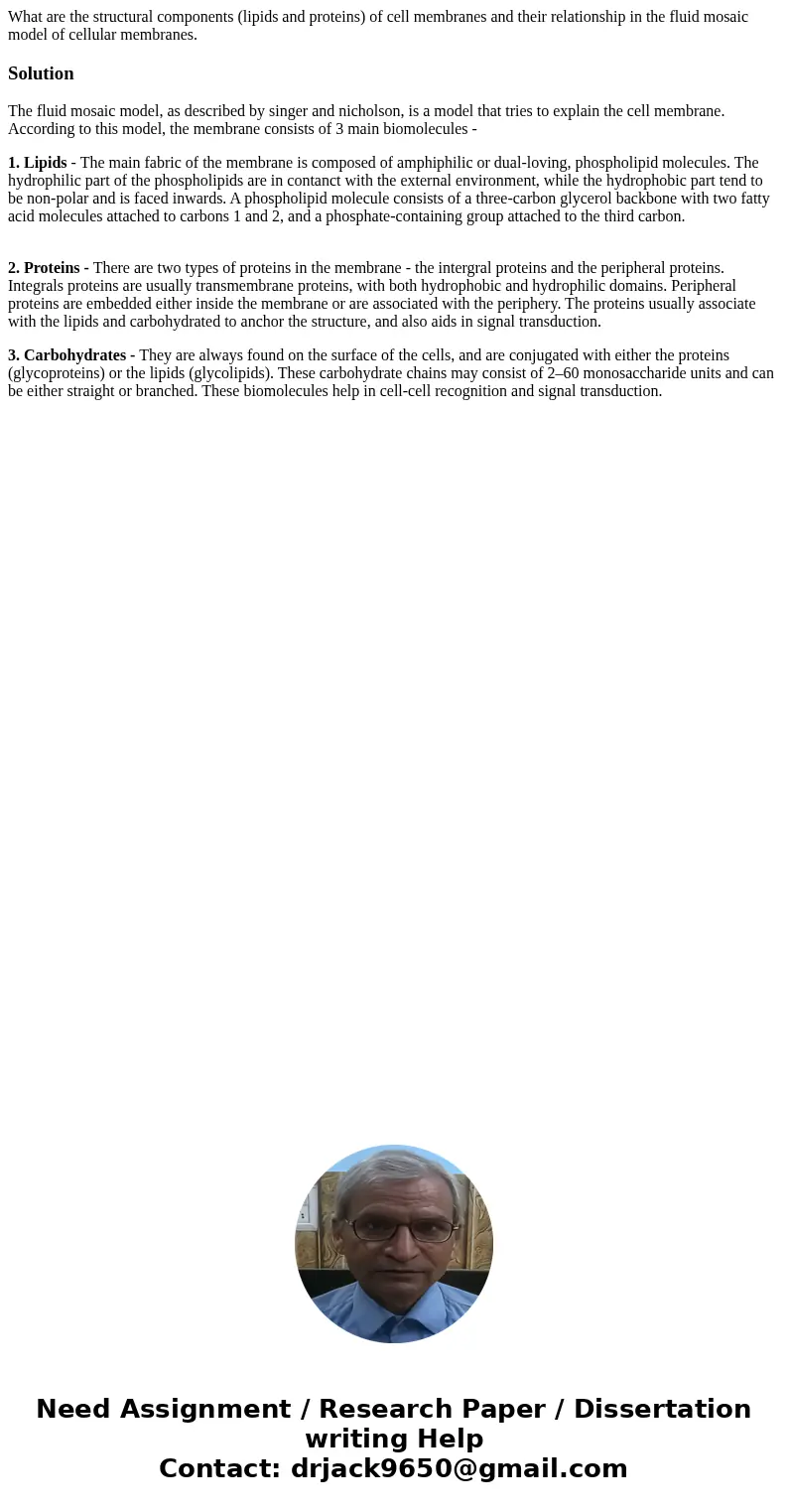What are the structural components lipids and proteins of ce
What are the structural components (lipids and proteins) of cell membranes and their relationship in the fluid mosaic model of cellular membranes.
Solution
The fluid mosaic model, as described by singer and nicholson, is a model that tries to explain the cell membrane. According to this model, the membrane consists of 3 main biomolecules -
1. Lipids - The main fabric of the membrane is composed of amphiphilic or dual-loving, phospholipid molecules. The hydrophilic part of the phospholipids are in contanct with the external environment, while the hydrophobic part tend to be non-polar and is faced inwards. A phospholipid molecule consists of a three-carbon glycerol backbone with two fatty acid molecules attached to carbons 1 and 2, and a phosphate-containing group attached to the third carbon.
2. Proteins - There are two types of proteins in the membrane - the intergral proteins and the peripheral proteins. Integrals proteins are usually transmembrane proteins, with both hydrophobic and hydrophilic domains. Peripheral proteins are embedded either inside the membrane or are associated with the periphery. The proteins usually associate with the lipids and carbohydrated to anchor the structure, and also aids in signal transduction.
3. Carbohydrates - They are always found on the surface of the cells, and are conjugated with either the proteins (glycoproteins) or the lipids (glycolipids). These carbohydrate chains may consist of 2–60 monosaccharide units and can be either straight or branched. These biomolecules help in cell-cell recognition and signal transduction.

 Homework Sourse
Homework Sourse